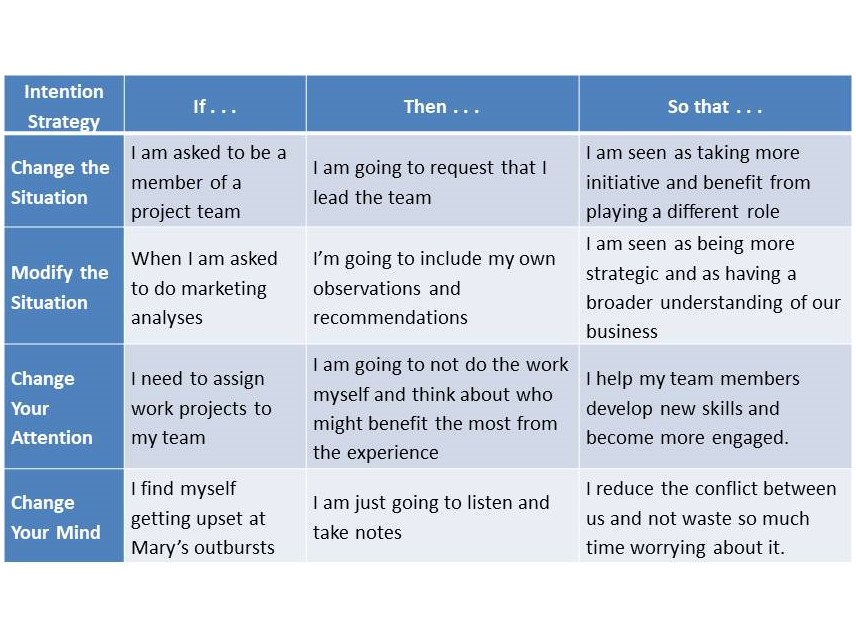
Through People


“We all live mostly by habit”
Ann M. Graybiel, Professor of Neuroscience at MIT
Innovative research by folks at MIT has further uncovered how our brains build the habits that we rely on every day. The implications of the research apply beyond routine habits like riding a bike or brushing your teeth. The exciting thing for me about this research is that it adds to our understanding of how leaders can develop complex skills, how leadership development can become more effective and efficient and how simple “mantras” can be used to develop all kinds of new leadership skills.
It turns out that there is a straightforward, three-step neurological process central to the formation of every habit – a cue, a practice and a reward. Our brains basically work to optimize rewards by quickly analyzing the cost benefit of every action. Forming habits that become second-nature in this way may free up the brain for more creative endeavors.
How might this neurological knowledge apply to developing or enhancing leadership skills?
Let’s take the skill of delegation for example. Leaders that are not effective at delegation often have learned the habit that, rather than take the time to properly delegate, it’s just easier to do the work themselves. From a habit forming perspective, this means that somewhere in their past the leader perceived a greater benefit from NOT delegating than from taking the time and effort to delegate . . . their brains analyzed the practice, saw the reward and locked in a behavior that became second-nature. All their brain needed to replay the habit the next time was a cue that was associated with the behavior and reward. The MIT research has shown that the cue can be as simple as a single word for the established neural pathways to fire.
When we apply the cue, routine, reward cycle to help leaders build a different skill (habit), we start with the reward and work backwards. What might be a greater benefit, impact or payoff from effectively delegating compared to “doing it yourself”? We refer to this step as “framing” the skills building and use a process we call Impact Mapping.
Once an alternative reward is established (and written down), we can then work to clearly describe a new “routine” or behavior that the learner can attempt that would achieve the new reward. Feedback from others is one useful way to help identifying not only the existing ineffective behaviors but suggest replacement behaviors. In our approach this is called “Seeing It” in which the current behavior is confirmed and the desired new approach is described and linked to the reward.
Next comes the cue part of the habit routine. This often comes from identifying a specific situation in the near future when it would be beneficial to try out a new habit and where there is a strong likelihood of getting the newly defined reward. The cues for kicking in a new delegation habit might be, “when I feel overworked . . .”, or “when we start a new project . . .”.
We’ve found it very helpful for converting all of this new habit planning into a Learning Map (the behaviors I use today, the behaviors I want to try out, do more of or do differently and the payoff from using the new behaviors) and an Intentional Development Action Plan. To really make sure the new habit has an effective cue, we’ve found that it’s helpful for the Plan to be as specific as possible – what situation, where, with whom, when, what might precede the situation, etc.)
So where does the idea of mantras come into play?
Our application of intentional development mantras is based on related neurological research, specifically the work around “implementation intentions” and what Swedish psychiatrist and neuroscientist David Ingvar described as the human brains unique ability to create “memories of the future.” Crafting memories of the future is akin to the sports psychology practice of visualizing a perfect baseball or golf swing and envisioning a positive outcome along with the emotion that you will feel from success. Mantras are implementation intentions in the form of, “If I find myself in X situation (cue), then I am going to do Y (routine) so that I can achieve Z (reward)”. Once the Impact Map, Learning Map and Intentional Development Action are in place, we work with learners to write mantras that can help cue new, more effective leadership behaviors.
We’ve adapted the neuroscientist’s suggestions on implementation intention statements to outline four possible kinds of mantras that will help build future memories on new skills. Examples of the four types of Intentional Development Mantras are below.

Yes, we all live mostly by habit but changing habits does not need to be seen as daunting. We just need to take a planned and intentional approach to cues, behaviors and rewards.